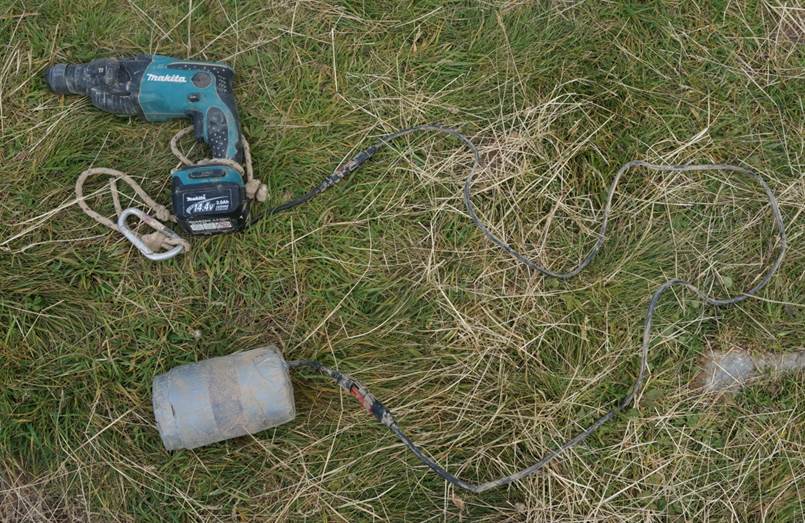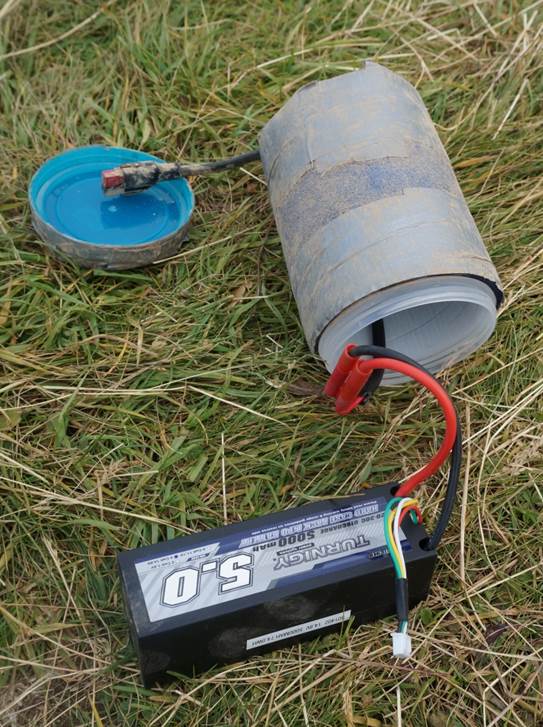MarkS
Moderator
This summer, for our expedition to Montenegro, we had a mess around trying to sort out a decent drill battery solution for a fairly remote camping spot. After a fair amount of testing we settled on using LiPo batteries for our 14.4 V Makita drills.
In a nutshell, we ended up with batteries weighing little more than the proprietary ones that could place >20 75x8 mm throughbolts in less than ideal conditions (0 degrees), or an estimated 35 or so 10 mm drop in anchors. An added bonus is that they only cost ?15 each, so we figured this might be useful info for others.
This is the main info that we found out from the testing:
- While drilling, the drill pulled 23 A at 12.6 V from a Makita battery.
- Using a LiPo, the drill pulled 27 A at 13.8 V.
- Adding a 50 mOhm resistor in the LiPo circuit, the drill pulled ~24 A.
We used the latter set-up with the resistor housed in an old Makita battery with a connector attached, meaning the drill didn't need to be modified at all. It worked really well for the duration of the expedition, and also on a subsequent expedition to China. Here are a couple of pics of what we ended up with:


For anyone particularly interested, there's more detail on the expedition website.
In a nutshell, we ended up with batteries weighing little more than the proprietary ones that could place >20 75x8 mm throughbolts in less than ideal conditions (0 degrees), or an estimated 35 or so 10 mm drop in anchors. An added bonus is that they only cost ?15 each, so we figured this might be useful info for others.
This is the main info that we found out from the testing:
- While drilling, the drill pulled 23 A at 12.6 V from a Makita battery.
- Using a LiPo, the drill pulled 27 A at 13.8 V.
- Adding a 50 mOhm resistor in the LiPo circuit, the drill pulled ~24 A.
We used the latter set-up with the resistor housed in an old Makita battery with a connector attached, meaning the drill didn't need to be modified at all. It worked really well for the duration of the expedition, and also on a subsequent expedition to China. Here are a couple of pics of what we ended up with:


For anyone particularly interested, there's more detail on the expedition website.



